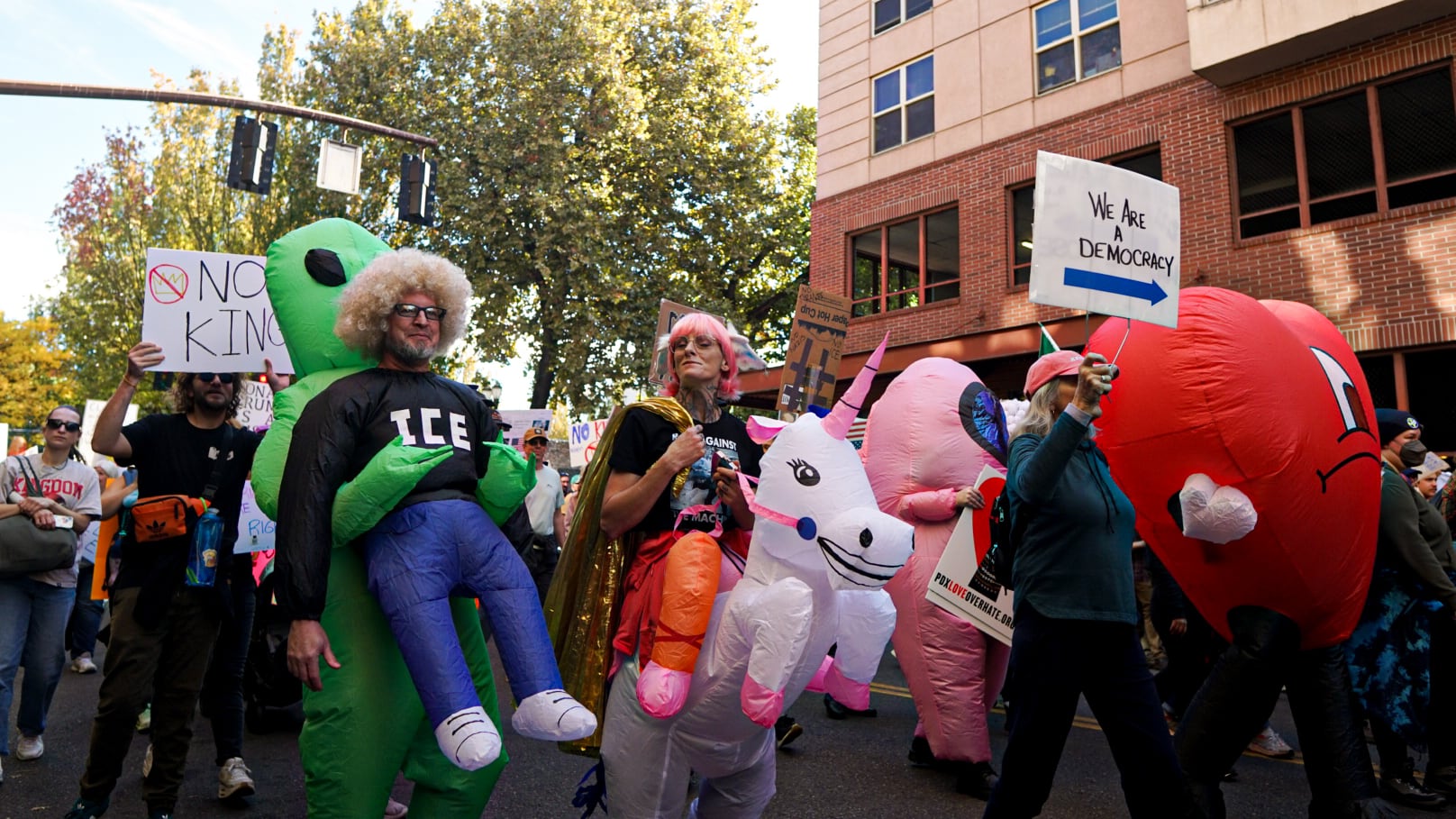In yet another twist in a weighty legal dispute, an appeals court has cancelled a ruling that had largely cleared the way for the Trump administration to deploy U.S. troops in Portland, opting to rehear the matter with a larger group of judges instead.
“Upon the vote of a majority of nonrecused active judges, it is ordered that this case be reheard en banc,” wrote Chief Judge Mary H. Murguia of the 9th U.S. Circuit Court of Appeals in an order Tuesday evening. The previous order, which a three judge panel of the court had published Oct. 20 “is vacated,” she wrote.
“This ruling shows the truth matters and that the courts are working to hold this administration accountable,” said Oregon Attorney General Dan Rayfield in a statement shortly after the latest order came down. “The Constitution limits the president’s power, and Oregon’s communities cannot be treated as a training ground for unchecked federal authority.”
What comes next at the appeals court level was not immediately clear. The order gave no other information, and did not set a schedule for its proceedings.
But the development means a Portland district court judge’s temporary restraining orders, which have now for weeks been blocking the deployment, are set to remain in place until their natural expiration dates, which remain a few days out.
Meanwhile, Oregon continues to seek a more durable block on the deployment: an injunction. The lower court is set to consider this matter in a three-day bench trial beginning Wednesday.
It has now been a month since President Donald Trump acted, following a provocative post on his social media platform, Truth Social, to deploy federalized Oregon National Guard members to Portland to quash protests surrounding the U.S. Immigration and Customs Enforcement facility on the south end of town—a move state and local leaders said was plainly unnecessary, but which the president said would restore order to a leftist hellscape allegedly besieged by domestic terrorists.
Arguing that this nightmarish characterization was an absurd fiction, Oregon officials filed suit, and won a temporary restraining order blocking the deployment to Portland. It was that order, halting the mission while litigation proceeded, that the appeals court panel would go on to assess.
The lower court judge, Karin J. Immergut, had found that the conditions on the ground in Portland did not appear meet any of the legally relevant circumstances under which the President was authorized to federalize the National Guard for domestic deployment.
But in its Oct. 20 order, the appeals court panel majority disagreed, finding that Immergut should have deferred more to Trump’s analysis of events and his military judgement.
The appeals court decision, rejecting the reasoning of the lower court’s first restraining order, seemed to all but clear the way for the deployment to proceed.
Yet there was another wrinkle. The dissenting judge on the panel had asked her colleagues on the broader appeals court to consider rehearing the case en banc—as a larger group. Soon, another judge on the appeals court initiated proceedings for a vote.
On Friday, the appeals court, noting that it had the consent of the members of the smaller panel, paused the Oct. 20 ruling of their colleagues while they considered whether to go the en banc route and hear the case as a larger cohort. The results of that vote arrived Tuesday evening.
On Wednesday morning, meanwhile, the case is set to proceed on a parallel track in Immergut’s courtroom at the federal courthouse in Portland.
Lawyers for Oregon and the Trump administration have in recent days been filing briefs citing various authorities—old court cases, media reports, an 1891 dictionary definition for the word “rebellion”—as they establish their basic cases for why the judge should, or should not, establish a more durable block on the deployment.
At issue is whether the situation at the ICE facility justified the calling in of the National Guard—and specifically, whether the president, as the applicable federal law puts it, “is unable with the regular forces to execute the laws of the United States” or “there is a rebellion or danger of a rebellion against the authority of the Government of the United States.”
In its brief, the U.S. government argues that “both conditions apply in Portland.”
In the weeks and months before the president made this assessment, Trump administration lawyers write, “agitators assaulted federal officers and damaged federal property in numerous ways.”
In its brief, however the state of Oregon and its allies say the challenges federal and local law enforcement have faced outside that facility have been plainly ordinary.
If the protests indeed grew violent in June, they remained well the capacity of law enforcement to manage, the state says, and from there they grew far tamer, into September, when police reports indicate little of note was happening outside the ICE facility at all.
Then, Oregon says, came Trump’s Sept. 27 post saying he would send troops to “War ravaged” Portland. Crowd sizes and tensions again increased, Oregon officials argue, though the most problematic interactions involved altercations between protesters and counter protestors—rather than being directed at federal officers.
One thing that both parties seem to agree on is that relations between the Portland Police Bureau and federal agents have been poor of late—though their analyses differ greatly.
The feds note that local law forbids PPB from assisting with immigration enforcement, but that the local police department has an “extraordinarily capacious understanding of the scope of this prohibition” and has at times refused to help to protect the ICE facility, or work constructively with their federal counterparts to, say, clear the ICE driveway of protesters.
Portland Police Bureau officers are set to testify otherwise at trial. And the state’s brief, for its part, argues that relations soured as federal law enforcement needlessly deployed munitions, gassing PPB officers themselves and creating made-for-TV spectacles out of minor protest events. Meanwhile the state says, the federal officer deployment surged without a clear command and control structure, undermining communication between federal and local officials.
As an example of the problems that emerged, the brief notes a moment when pepper balls were shot in the direction of a PPB officer. When confronted, the brief says said, federal officials responded, “help or get out of the way.”

